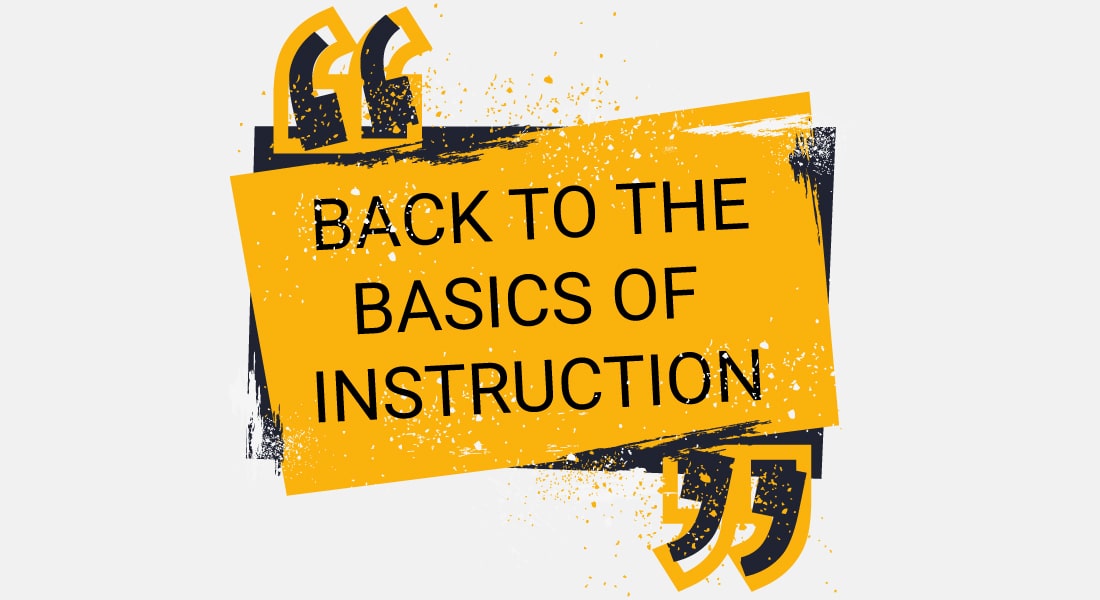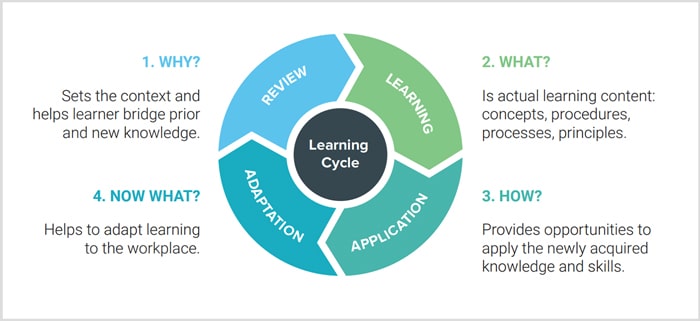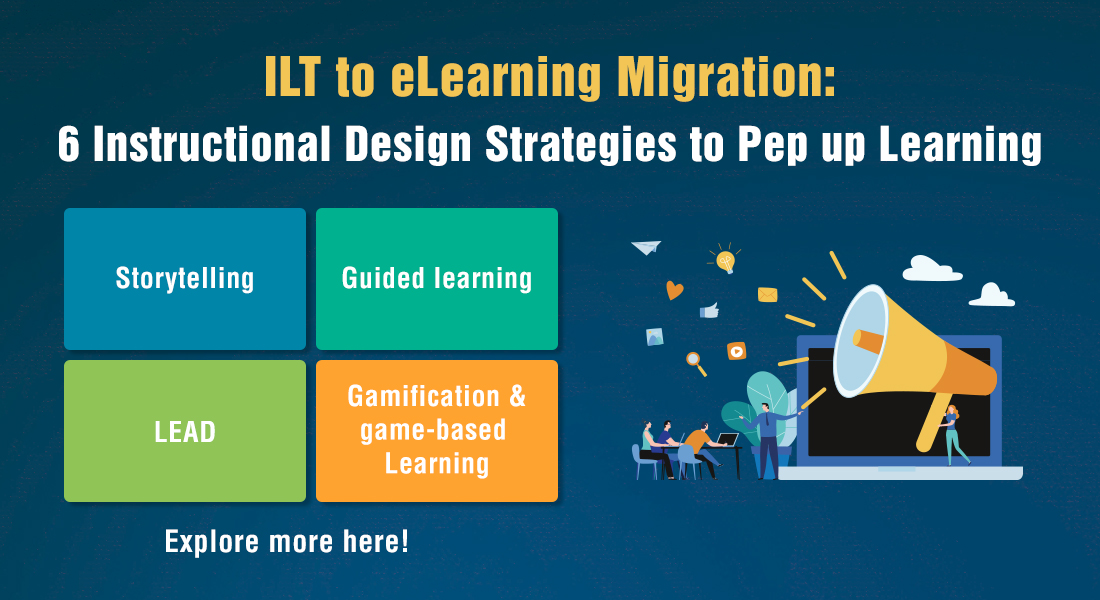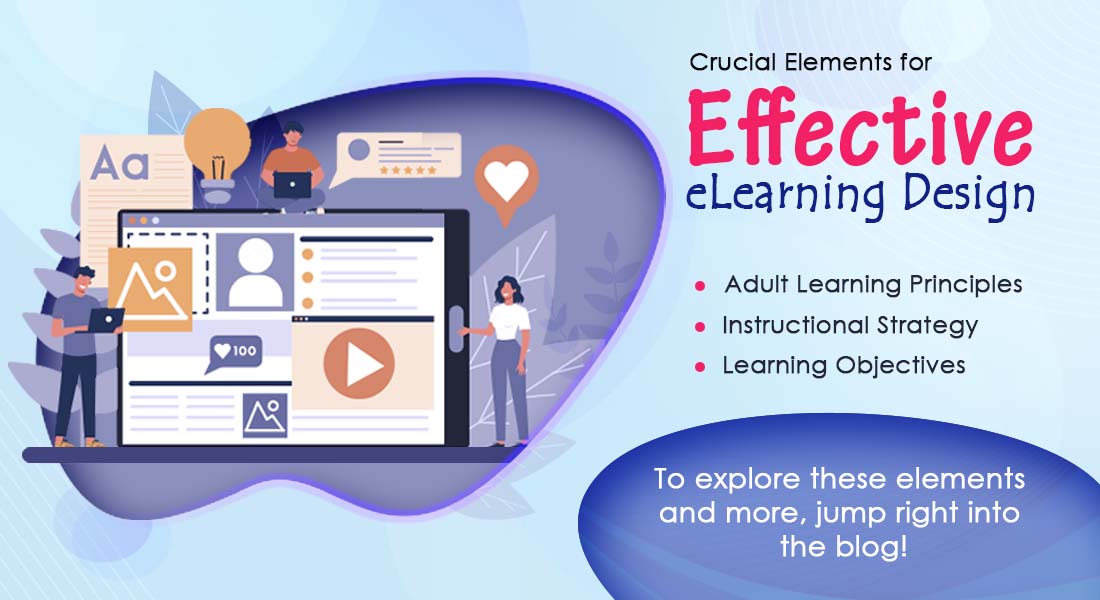Go Back to the Basics – If You Want to Create Effective Instruction in eLearning!
There are a few time-tested elements and principles of good learning that will help design effective eLearning courses. Explore them in this blog and ensure eLearning improves performance and enhances ROI!

In a world of advancing technology, AR and VR, and whatever else, where everyone demands instant gratification and entertainment, sometimes it becomes difficult for us training managers to see the forest for the trees.
We sometimes forget what the training is actually intended to do and go totally overboard with a lot of add-ons and design elements. Then we are surprised and shocked when the results don’t match our expectations. Because the gorgeous and thoroughly entertaining course did nothing (except strain the budget perhaps) when it came to improving employee performance.
Explore eLearning trends you shouldn’t miss implementing.
I’m not against beautiful looking courses or courses that are hugely engaging. Not at all. After all, who can resist them? My point is that you can go for such courses, but not at the expense of effectiveness of instruction.
So, the question is, how can we ensure our eLearning courses are effective and result in improved performance and enhanced ROI?
There are a few time-tested elements and principles of good learning that will help. The secret to successful training is to deliberately and carefully incorporate each of these elements into the design of the learning experience. This is true for both Instructor-led Training (ILT) and eLearning.
How Do We Ensure Training is Engaging, Improves Performance, and Enhances ROI?
Time-tested Elements and Principles for Effective Learning
- Adult Learning Principles
- The Learning Cycle
So, what are these elements and principles? The principles of adult learning and the learning cycle. Let’s go a little in detail into each.
Principles of Adult Learning
Unlike children who learn for the sheer joy of learning new things (if they are interested), driven by a deep sense of curiosity and wonder (a very powerful motivator for learning!), adults are driven more by utility – the ‘What’s in It for Me (WIIFM)’.
Explore adult learning principles in detail.
And as corporate training is all about teaching adults, applying the 6 adult learning principles will help them learn effectively.
| Learning Principle |
How to Apply |
| 1. Need to Know Adults need to know why they should learn something.
|
Provide learning objectives that tell them why they “need to learn”. What is it that you want them to achieve at the end of the course? In what way would that knowledge improve their current skills and abilities? |
| 2. Self-concept Adults have a deep need to be self-directing.
|
Involve them in the learning process. Allow them to navigate freely through the course without restrictions. |
| 3. Experience Adults have more experience than younger learners.
|
Help them build on and apply their previous experience and knowledge to the new learning. |
| 4. Readiness to Learn Adults are most interested in learning something that has immediate relevance to their job performance.
|
Inform them of the benefits of the training (the WIIFM) – how it will help them do their jobs better. |
| 5. Problem Orientation Adults enter a learning experience with a problem-centered orientation.
|
Design training to be task-oriented focused on practical application, to help them solve problems on the job. |
| 6. Intrinsic Motivation Adults are motivated to learn more by intrinsic motivators.
|
Provide engaging visually appealing content. Challenge them regularly and provide constructive feedback that makes them feel appreciated. |
The Learning Cycle
There four main phases in the learning cycle:
- Review (recalling what we already know)
- Learning (acquiring new knowledge, skills, or attitudes)
- Application (applying what we learned)
- Adaptation (transferring the learning across similar situations)

Effective learning experiences are designed with all the elements of the learning cycle in the correct sequence. However, many times in corporate training, we tend to jump in and start with the actual learning instead of giving the learner a chance to connect what he/she already knows to the new learning. We also tend to leave out adaptation in our design. And that’s the reason why so many of the eLearning courses don’t do what they’re supposed to do.
This is how the learning cycle can be incorporated in learning design.
Start with the ‘WHY’ by giving an opportunity for Review – through micro modules, videos, infographics, or pre-tests to help the learner bridge the gap from the known (existing) to unknown (new) knowledge, and recall prior knowledge that is relevant to the current learning.

Go to the ‘WHAT’ by introducing the learning content – standalone eLearning or microlearning courses that improve their knowledge, skills, or attitudes.

Show the ‘HOW’ through simulations, case studies, applied exercises, and performance-based assessments on the applications of the learning.

Answer the ‘NOW WHAT?’ by helping the learner transfer the new knowledge to on-the-job performance – provide performance support and job-aids through microlearning assets, infographics, how-to videos, interactive PDFs, and checklists.

Parting Thoughts
So, there you have it – the evergreen basics of designing effective eLearning courses that lead to improved performance and enhanced ROI. For more tips on effective eLearning design, get this eBook now!











